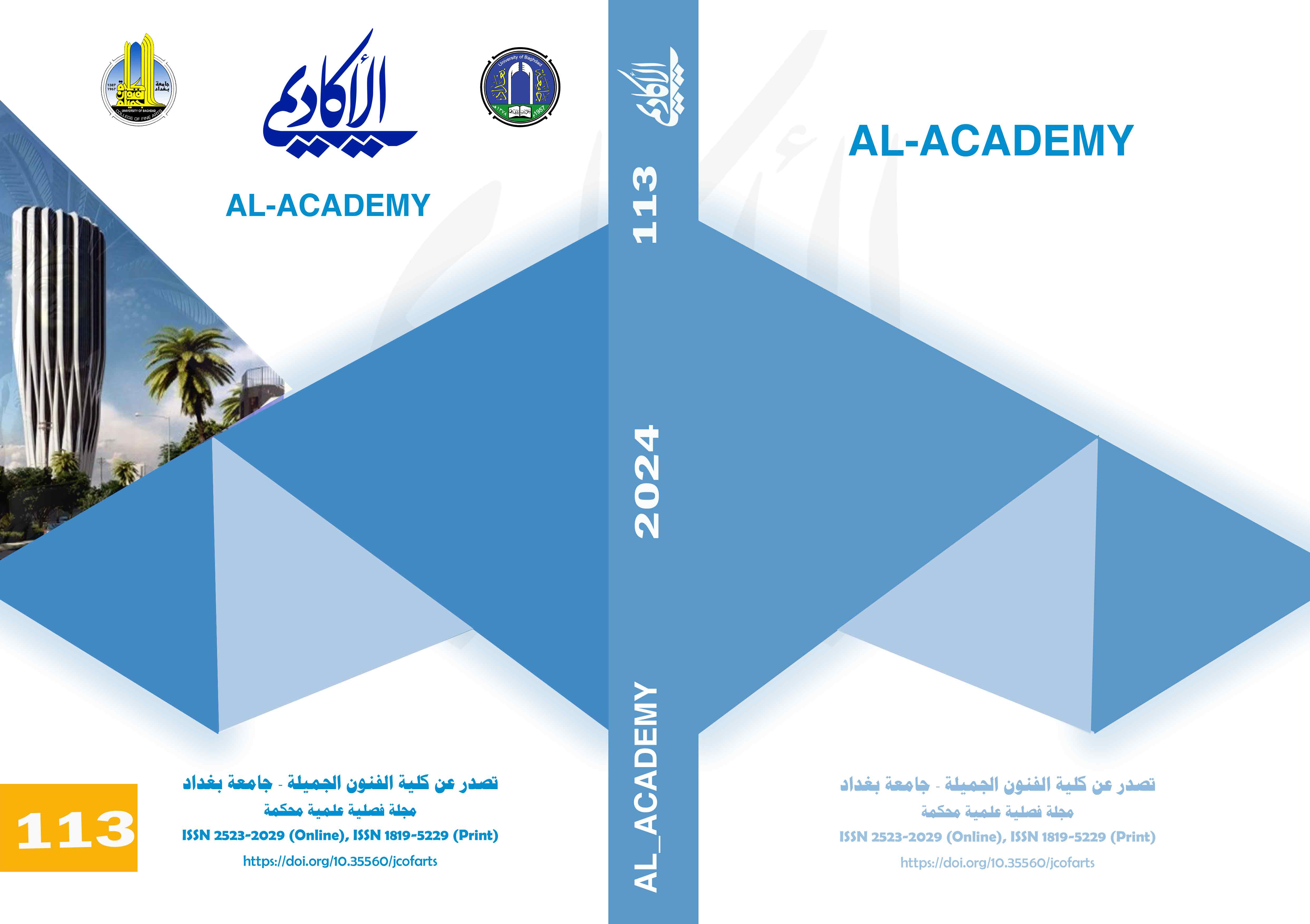Plastic features of the concept of violence in ancient and contemporary ceramic formation
DOI:
https://doi.org/10.35560/jcofarts1475Keywords:
features, formation, concept of violence, ceramic formationAbstract
Ancient and contemporary ceramic formation addresses the issue of the relationship between it and the concept of violence by expressing its manifestations, first in formal composition, and recording the real features, as a result of the conflict that man experiences. Its importance has emerged, among the ceramic arts, in particular, in terms of formal compositions and color techniques, as well as its methods, which made it have dimensions, sometimes unrealistic, characterized by strong expression, and a dynamic rhythm, clear through its circulation and movement within society. In addition to its creative design lines resulting from the process of stimulating the imagination, in which it achieved inspiration and symbolism, and presented more vibrant models, in which the female ceramic formation became one of the elements, repeated in expressing the concept of (violence), it has a special power of influence, as it provides advertising propaganda. Through diacritical marks, towards a positive life, under a new perspective of social relations. Shedding light on these ceramic formations is an acknowledgment of their importance, and for the purpose of presenting a new reading of their implications in contemporary art.
References
Al Said, S. (1995). Fine Art Dialogue. B.M: B.N.
Al-Hamza, K. (2006). The nature of artistic work and its social role. Amman: Al-Yarmouk Research Series.
al-Miskini, U.-Z. (2014). Tahrir al-Mahsoos. Rabat: Dar al-Aman.
Al-Triki, R. (2009). Aesthetics and the Question of Meaning. (I. Al-Amiri, Trans.) Beirut: Mediterranean Studies Publishing.
Baudrillard, J. (1976). echange symbolique et la mort. B.T: Biblioth Que des sciences Humainese.
Berger, J. (2010). Picasso, his success and failure. (F. Al-Sayegh, Trans.) Beirut: B.T.
Breton, D. (1998). ta Decouverte. Paris: coll? Essais.
Child, J. (1978). The Neolithic Age. (A. K. Mahfouz, Trans.) Damascus: Ministry of Culture.
Deleuze, G. (1999). Dialogues in Philosophy, Literature, Psychological and Political Analysis. (A.-H. Azraqan, Trans.) Morocco: East Africa.
Dewey, J. (1963). Art is Experience. (Z. Ibrahim, Trans.) Cairo: National Center for Translation.
Fernandez, J. (1969). Abuide to Mexican Art. U.S.A: University of Chicago.
Funkenstein, S. (1971). Realism in Art. (M. A. Mujahid, Trans.) Cairo: Egyptian General Authority for Copyright and Publishing.
Khalaf, S. (2002). Lebanon in the Tropic of Violence. Beirut: Dar Al-Nahar.
Moreno, C. (1987). Latin American Literature. Kuwait: National Council for Culture and Arts.
Muller, J. A. (1988). Art in the Twentieth Century. (م. ف. الخوري, Trans.) Damascus: Talas House for Studies and Publishing.
Sahib, , Z. (2010). The Myth of the Recent Time. Baghdad: Dar Al-Asdiqa.
Sahib, Z. (2013). The Wounded Lioness. Baghdad: Dar Al-Jawahiri.
Downloads
Published
Issue
Section
License
Copyright (c) 2024 Ealayh Mohsen Abboud

This work is licensed under a Creative Commons Attribution 4.0 International License.













